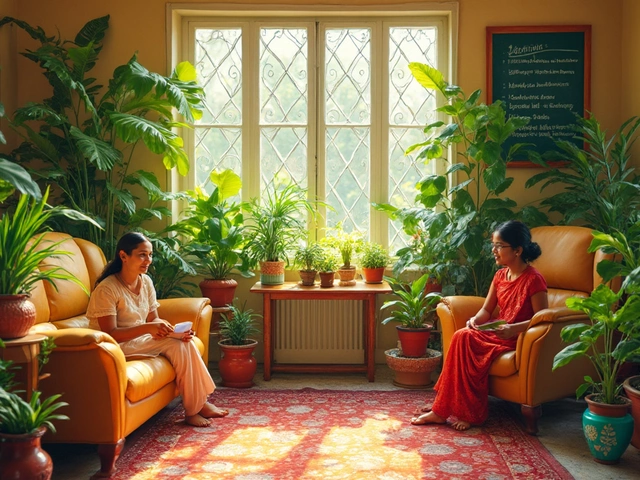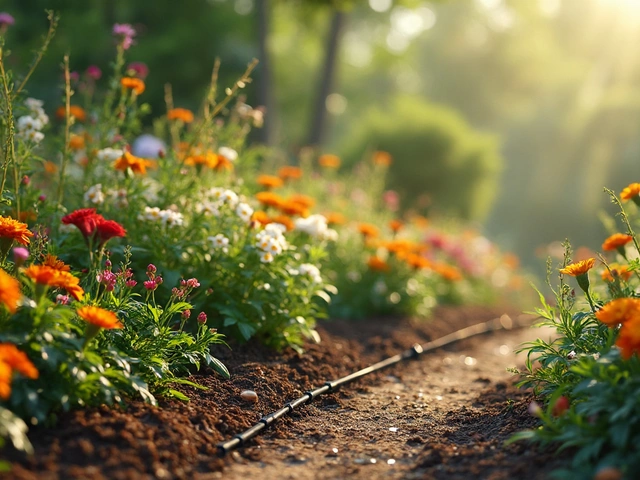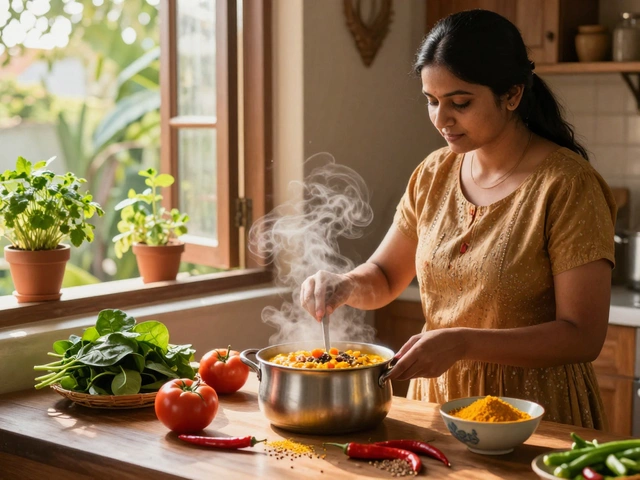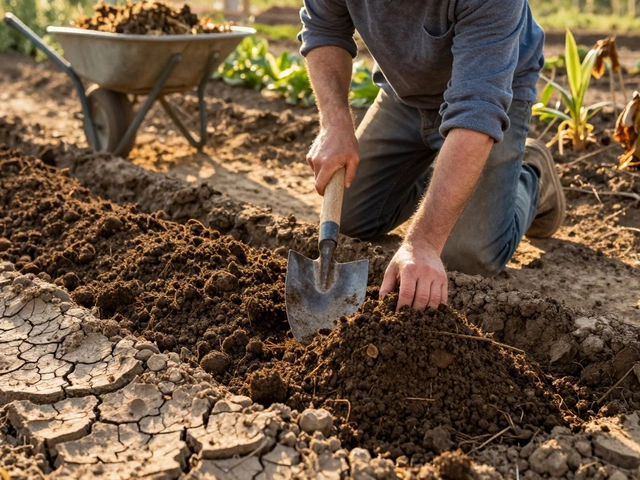If you’ve hung around any plant shop lately, you’ve probably been told to mist your houseplants. It sounds like easy magic: spritz, and your plant’s happy. But pause for a second and ask yourself—do they actually need it, or is it just a habit we pick up from Instagram? Plenty of plant lovers swear by misting, yet you’ll also bump into those who say it’s pointless or even risky. So who’s right? Let’s dig into it, roots and all, and see what really helps your leafy roommates stay healthy indoors.
Understanding Humidity Needs for Common Houseplants
Plants come from wildly different places. That peace lily on your windowsill’s great-great-grandparents once thrived in a damp South American forest. Meanwhile, the snake plant chilling in your hallway is a proud desert survivor. Humidity is a big deal: rainforest species expect moist air (often 50-80% humidity), dryland plants are comfy at ordinary room levels (30-50%). Auckland’s average humidity is around 75% in winter and 65% in summer, already friendlier than most indoor settings outside the tropics. But what about heated rooms or air-conditioned flats? Now it gets tricky.
Tropical houseplants like ferns, calatheas, alocasias, and philodendrons really want 50% or higher humidity. When the air’s too dry for these plants, leaves may brown and edges crisp. But hardy classics—think pothos, sansevieria, or ZZ plant—don’t throw a fit if the air dips drier. This isn’t a minor footnote: if you’ve been wondering why your Boston fern looks rough while a pothos is thriving nearby, it could all come down to dry air.
That said, humidity is just one piece. Soil moisture, light, airflow, and temperature all play parts. A 2023 study published in Plant Physiology found that increased humidity boosts stomatal function (the leaf’s breathing mechanism) in tropical species, but desert plants don’t really care. Translation? Some houseplants need that extra humidity, but not all.
One mistake folks make is seeing plant leaves get dry and instantly misting, thinking it’ll cure all. Sometimes that dryness is from too much sun or not enough water at the roots. Know your plant’s origins. Most rainforest species crave higher air moisture and will show you.
- Brown leaf edges
- Curling leaves
- Slow growth
Understanding when humidity matters is step one. Before diving into misting bottles, get to know where your plant’s ancestors called home. This is the best way to avoid wasting energy (and water) on plants that don’t benefit from misting at all.
Does Misting Raise Humidity? What Actually Happens
At first glance, misting seems logical if your plant needs more humidity. But let’s break down what really goes on. When you spray water droplets onto a plant, most of them sit briefly on the leaves, then evaporate within minutes, maybe seconds on a warm day. Does that tiny burst of moisture really boost the room’s humidity? The short answer: barely.
Researchers at the RHS (Royal Horticultural Society) in the UK measured this in 2022. They found that misting increased humidity only for 10–30 seconds, in the microzone right around the leaf. Step away for a cup of coffee, and any bump in humidity has vanished, unless you sealed your plant in a plastic tent. Real talk: to shift the average air humidity up by even a few percent, you’d need to mist constantly, every 10–15 minutes. Not exactly practical for daily life or your water bill.
Misting also has other side effects. It leaves droplets that can collect dust (not ideal for photosynthesis). Worse, in low airflow or on crowded leaves, constantly damp foliage can set the stage for fungal problems—powdery mildew and leaf spot diseases thrive in these conditions. Orchids, begonias, and pileas are notorious for spotting and fungus if their leaves are misted often.
Still, there’s that satisfying flick of the wrist, the little cloud of mist—it feels like self-care, right? But unless you only own humidity-hungry ferns or calatheas, almost every expert will tell you it’s a fleeting fix at best. Even a shallow tray of water and pebbles does more for the overall room humidity than daily misting.
That’s not to say it’s useless. There are certain situations when misting has a role, but it isn’t a substitute for true humidity care. It’s especially handy to clean leaves—just use a soft, damp cloth straight after. And for pest outbreaks like spider mites, strong misting can help disrupt webs or flush bugs briefly, working alongside other pest control methods.
Keep in mind, if you pick misting as your plant’s main humidity fix, you’ll likely be disappointed. Your room’s air, particularly in winter with heaters cranking, will still be bone dry minutes later. Misting is a quick reset, not a long-term solution for dry homes or picky rainforest plants.

The Right and Wrong Way to Mist Your Plants
Suppose you still want to mist—and for some plants, it’s not a bad thing, done right. But there are ways to do it that won’t create spotty leaves or rot. Rule one: don’t mist at night. Leaves need time to dry before dark; otherwise, dampness just hangs there, inviting fungi. Early to mid-morning is ideal; air (and leaves) have hours to dry out. Warm, bright rooms are best.
Rule two: don’t soak. You’re looking for a fine, gentle mist across the leaf surface and, importantly, the air around the plant. Don’t drench; think “dew” rather than “rainstorm.” Brass or glass misting bottles work better than clunky plastic spray guns—bonus style points for that old-school gardening look.
Rule three: avoid the flowers. Misting open blooms will shorten their life and encourage mold. Focus on leaves, especially undersides if treating spider mites.
Rule four: consider your water source. Tap water, especially in cities, can leave mineral spots that mark shiny leaves. Distilled or rainwater is the gold standard—no residue and gentler on delicate foliage.
For many households, skipping daily misting and focusing on these proven options is going to do your plants more good:
- Use pebble trays—fill a shallow tray with gravel and water, perch the pot above, and the evaporating water gently lifts humidity near the plant’s leaves all day.
- Group plants together—plants release water vapor through transpiration, and clustering them boosts the micro-humidity.
- Run a small humidifier in rooms with lots of fussy plants, especially in heated winters.
- Grow plants in rooms with natural humidity—think bathrooms with steamy showers or kitchens where water gets used daily.
Don’t feel guilty if you skip misting entirely. A 2024 houseplant survey in New Zealand found that 71% of owners rarely mist, relying instead on better watering routines, pebble trays, and occasional humidifier use. Most successful growers agree: good airflow, proper watering, and balanced light matter far more for healthy houseplants.
When Misting Actually Makes Sense (and When to Skip It)
Here’s where misting does work. Newly propagated cuttings, especially those with tender new roots, can dry out fast in indoor air. Here, a quick mist helps slow water loss while roots are forming in the first weeks—just keep the leaves dry overnight.
Plants fighting spider mites or other web-building bugs can temporarily benefit from strong overhead misting, combined with good gentle washing. After treating, keep the leaf surfaces dry to avoid spreading more pests.
Humidity-loving ferns, calatheas, and marantas sometimes perk up after misting, but if your space is constantly dry, you’ll need more than a bottle. Pair occasional misting with a pebble tray or humidifier for best effect. Sensitive orchids with aerial roots sometimes appreciate a light spray, which mimics the dewy forest air they evolved in; just avoid wetting the flowers.
But for tough-as-nails houseplants like snake plants, rubber trees, pothos, and succulents, skip the mist. These plants store water in their leaves or roots, so frequent misting adds nothing. It might even encourage rot or attract gnats in over-watered soil. For cacti, misting is practically plant abuse—dry air is how they thrive.
Worried you’ll make your monstera sad without misting? Plants usually adapt better than we expect. If it’s growing well, with fresh leaves and robust roots, don’t feel pressured. Focus more on deep watering, bright but indirect light, and feeding in spring and summer.
Still unsure? Compare daily misting with a humidifier. A small desktop humidifier (they sell out every Auckland winter, for good reason) raises a room’s humidity by 5-20% and runs for hours, not just fleeting minutes. Here’s a quick comparison:
| Method | Avg. Duration of Effect | Risk of Disease | Best Used For |
|---|---|---|---|
| Misting | Seconds to minutes | High (if overused) | Cleaning, cuttings, emergencies |
| Pebble Tray | Hours | Low | Everyday microclimate |
| Group Planting | Ongoing | Low | All |
| Humidifier | All day (with refills) | Low to medium | Whole room, many plants |
Remember, the smartest plant parents pay attention. A quick hand check—does the leaf feel crispy or soft, does the soil stay wet or bone dry—is way more telling than a strict misting schedule.
Plants don’t want us to stress. They’ll forgive a missed misting session or an extra dry spell as long as you’re meeting their main needs. So next time you reach for the spray bottle, pause and ask: is it really for the plant, or is it just for me?





